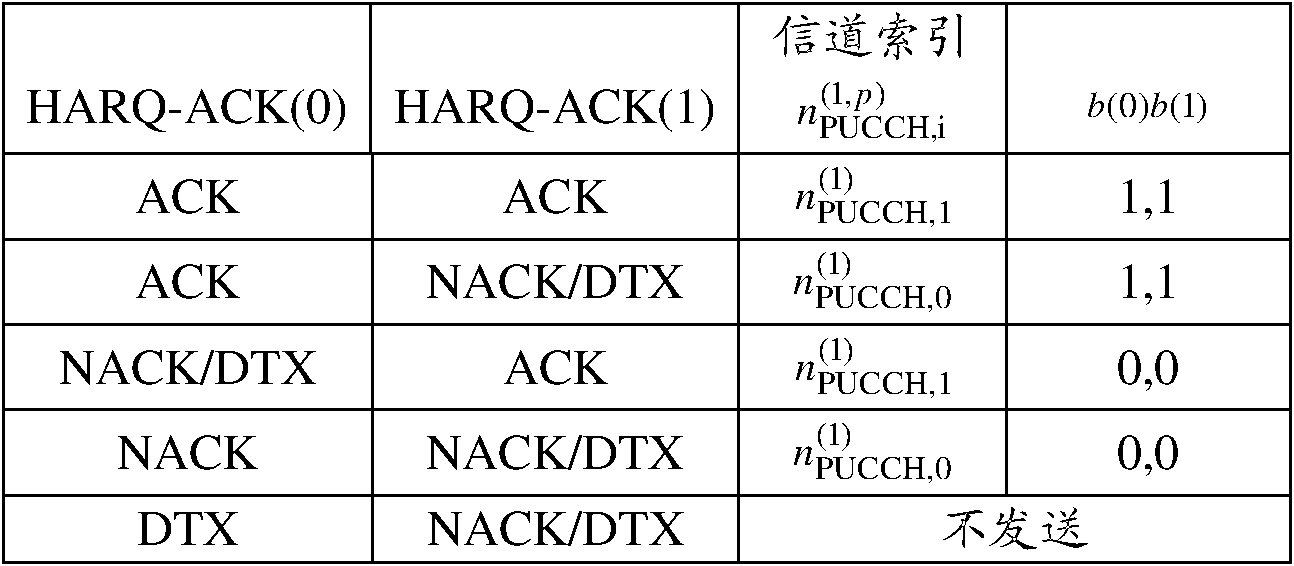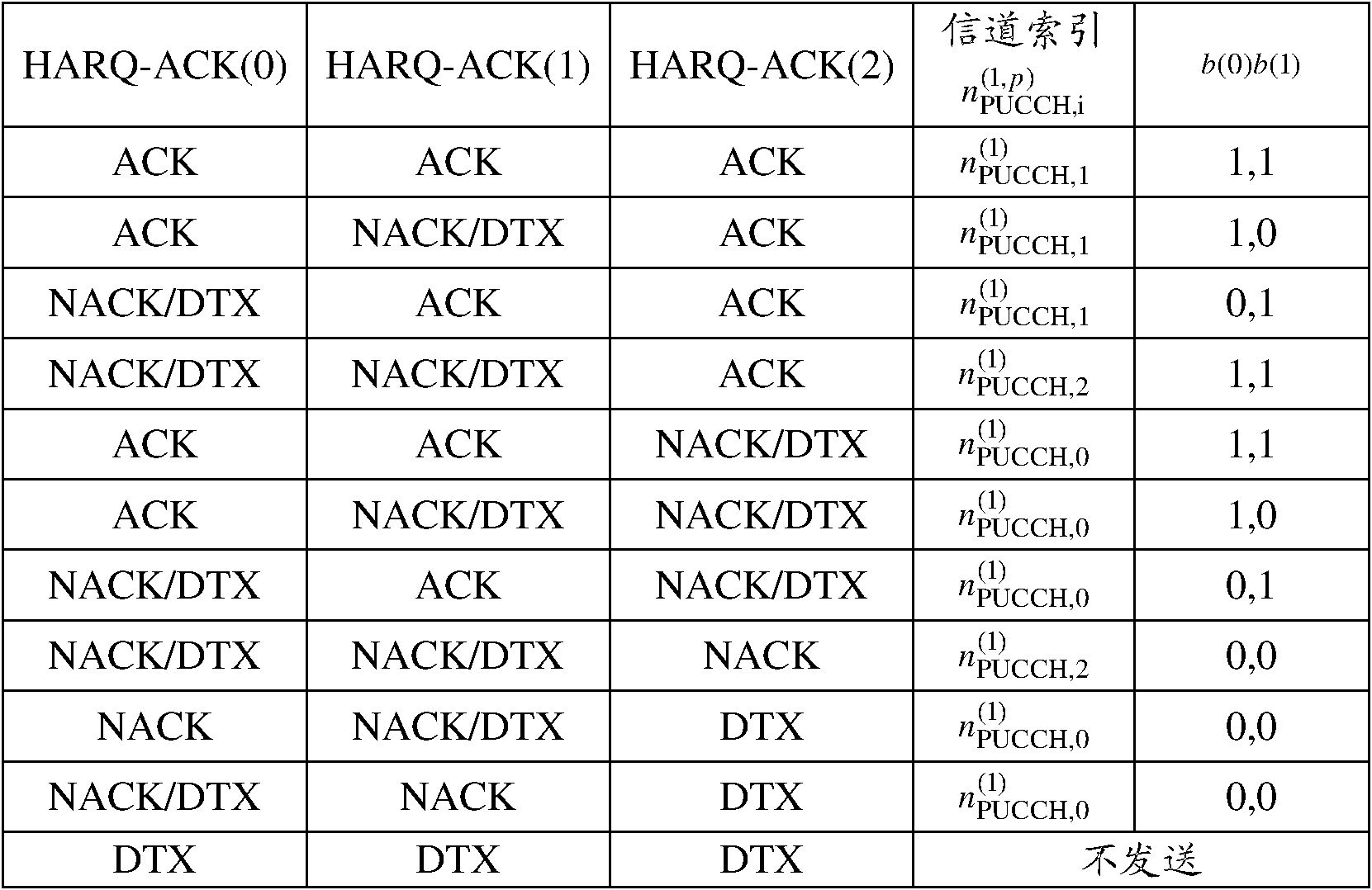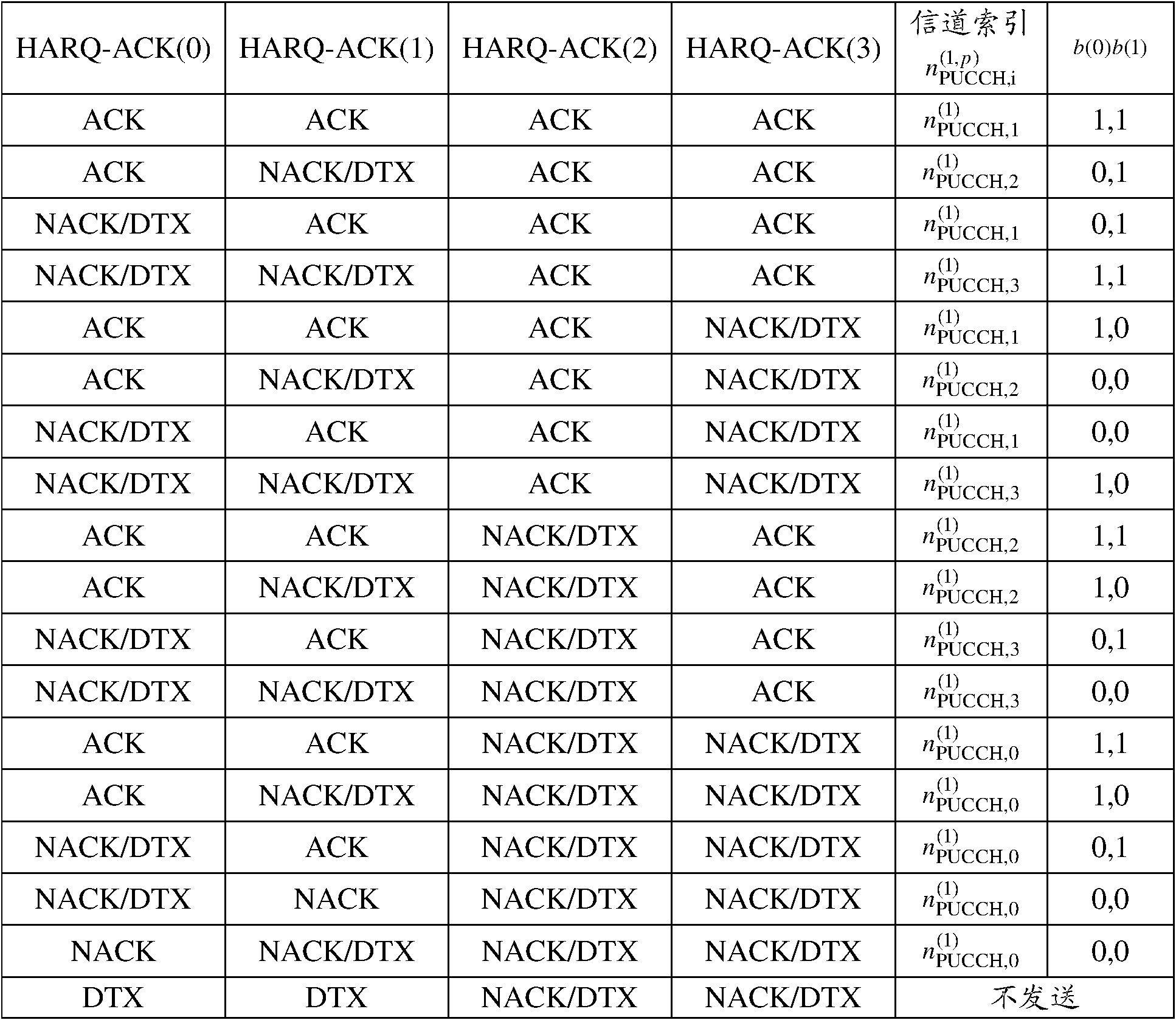Transmitting method for acknowledgment/negative acknowledgment and user terminal
A technology of reply message and error reply, applied in the field of communication, can solve problems such as not supporting binding of serving cells, indetermination, inconclusiveness, etc.
- Summary
- Abstract
- Description
- Claims
- Application Information
AI Technical Summary
Problems solved by technology
Method used
Image
Examples
Embodiment 1
[0110] Embodiment 1: [Feedback mode determination method 1, feedback mode 1, subframe window M=2]
[0111] Such as Figure 5 As shown, assuming that the current base station configures two downlink serving cells for the UE, namely the primary downlink serving cell (PCell) and the secondary downlink serving cell (SCell), the current uplink subframe needs to feed back ACK / For a NACK response message, when the PDSCH of the downlink subframe corresponds to two response messages, perform a logical AND operation on the two response messages and then perform a sorting operation. It is assumed that the PDSCH scheduling of the SCell does not use cross-carrier scheduling, and the PDSCH scheduling of each downlink subframe includes a corresponding PDCCH. Assume that the ACK / NACK response messages of the two subframes on the PCell are {ACK, NACK} respectively, and the ACK / NACK response messages of the two subframes of the SCell are {ACK, ACK} respectively; since the PCell does not conta...
Embodiment 2
[0132] Embodiment 2 [feedback mode determination method 1, feedback mode 1, M=3]
[0133] Such as Figure 11As shown, assuming that the current base station configures two downlink serving cells for the UE, namely the primary downlink serving cell (PCell) and the secondary downlink serving cell (SCell), the current uplink subframe needs to feed back M=3 downlink subframe ACK / For a NACK response message, when the PDSCH of the downlink subframe corresponds to two response messages, perform a logical AND operation on the two response messages and then perform a sorting operation. It is assumed that the PDSCH scheduling of the SCell does not use cross-carrier scheduling, and the PDSCH scheduling of each downlink subframe includes a corresponding PDCCH. Assume that the ACK / NACK response messages of the three subframes on the PCell are {ACK, ACK, NACK} respectively, and the ACK / NACK response messages of the three subframes of the SCell are {ACK, NACK, ACK} respectively; since the ...
Embodiment 3
[0144] Embodiment 3 [feedback mode determination method 1, feedback mode 1, M=4]
[0145] Such as Figure 13 As shown, assuming that the current base station configures two downlink serving cells for the UE, namely the primary downlink serving cell (PCell) and the secondary downlink serving cell (SCell), the current uplink subframe needs to feed back M=4 downlink subframes ACK / For a NACK response message, when the PDSCH of the downlink subframe corresponds to two response messages, perform a logical AND operation on the two response messages and then perform a sorting operation. It is assumed that the PDSCH scheduling of the SCell does not use cross-carrier scheduling, and the PDSCH scheduling of each downlink subframe includes a corresponding PDCCH. Suppose the ACK / NACK response messages of the 4 subframes on the PCell are {ACK, ACK, DTX, ACK}, and the ACK / NACK response messages of the 4 subframes of the SCell are {ACK, ACK, ACK, ACK}; Contains SPS subframes, and according...
PUM
 Login to View More
Login to View More Abstract
Description
Claims
Application Information
 Login to View More
Login to View More - R&D
- Intellectual Property
- Life Sciences
- Materials
- Tech Scout
- Unparalleled Data Quality
- Higher Quality Content
- 60% Fewer Hallucinations
Browse by: Latest US Patents, China's latest patents, Technical Efficacy Thesaurus, Application Domain, Technology Topic, Popular Technical Reports.
© 2025 PatSnap. All rights reserved.Legal|Privacy policy|Modern Slavery Act Transparency Statement|Sitemap|About US| Contact US: help@patsnap.com



